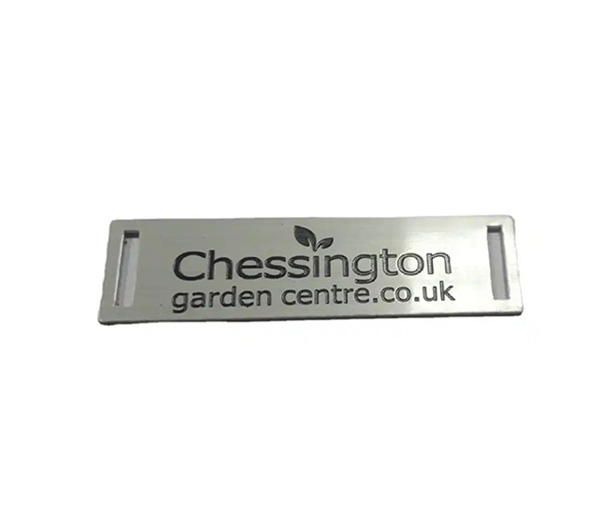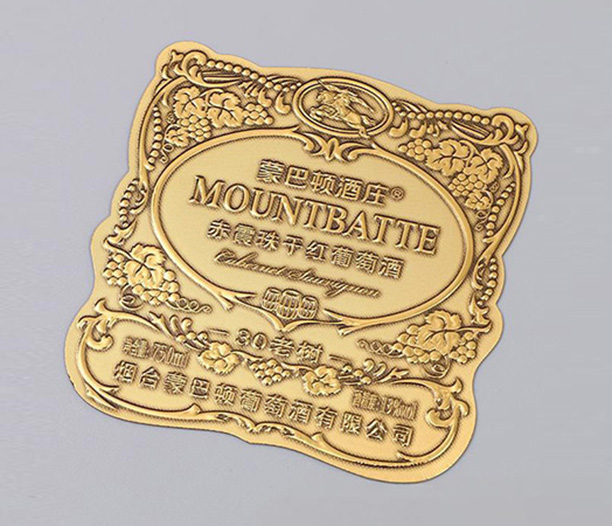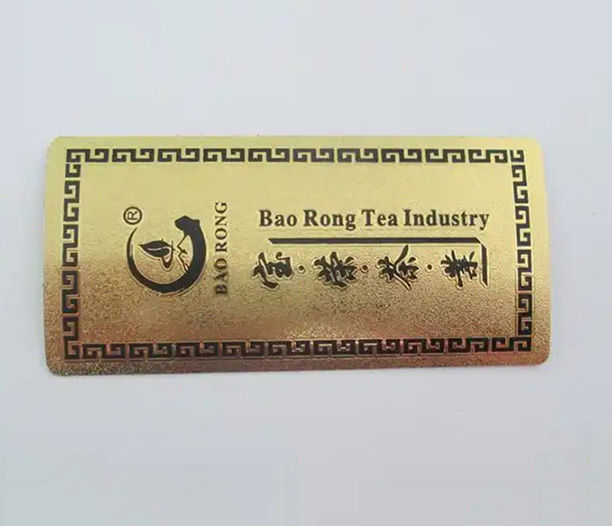In the world of organization, security, and professional aesthetics, the humble locker is a cornerstone. Yet, its functionality and identity are often unlocked by a small but critical component: the metal locker name plate. Far more than just a simple label, a well-chosen name plate enhances security, streamlines operations, and projects an image of order and quality. Whether for a corporate office, a school, a gym, or an industrial facility, selecting the right metal locker name plates is a decision with lasting impact. This comprehensive overview will delve into the seven essential factors you need to consider to make an informed choice that meets your specific needs.

Understanding the Core Purpose of Metal Locker Name Plates
Before diving into specifications, it's crucial to understand the multifaceted role these plates play. At first glance, their purpose seems straightforward—to display a name or number. However, the function of metal locker name plates extends much further. They are fundamental for asset identification, allowing for the quick and easy assignment of lockers to employees, students, or members. They enhance security by clearly demarcating assigned property, reducing mix-ups and unauthorized use. Furthermore, they contribute significantly to the overall environment; sleek, uniform plates convey professionalism and attention to detail, while worn or mismatched labels can suggest neglect. Durability is another core purpose; unlike paper or plastic, metal withstands daily wear, cleaning chemicals, and the test of time, ensuring your investment remains legible and presentable for years.
Material Choices: From Aluminum to Stainless Steel
The material of your metal locker name plates is the primary determinant of their durability, appearance, and cost. The most common options include:
Aluminum: This is a lightweight, cost-effective, and highly versatile material. Aluminum plates are often brushed or anodized, providing a modern, corrosion-resistant finish that accepts etching and printing beautifully. They are ideal for most indoor corporate, gym, and school environments.
Stainless Steel: Known for its exceptional strength and superior corrosion resistance, stainless steel is the go-to choice for harsh environments like industrial plants, laboratories, pools, and food processing facilities. It offers a distinctive, professional look that can be polished to a mirror finish or brushed for a subtler effect.
Brass and Bronze: These classic materials are chosen for their distinctive, elegant appearance, often seen in prestigious clubs, hotels, and traditional offices. They develop a patina over time but can be polished to maintain a bright, luxurious shine. They are typically at a higher price point.
Selecting the right material depends on balancing your budget with the environmental demands and the image you wish to project.
Engraving vs. Stamping: A Look at Manufacturing Techniques
How the information is applied to the plate is just as important as the plate itself. The two most prevalent methods for creating metal locker name plates are engraving and stamping.
Engraving: This process uses a rotary or laser tool to cut into the metal's surface. Laser engraving, in particular, is extremely precise, allowing for complex logos, small fonts, and high-resolution graphics. The engraved areas can be left as-is for a subtle look or filled with enamel paint (often black or white) for high contrast and superior readability. Engraved plates offer a clean, modern, and highly professional appearance.
Stamping: This traditional method uses a die to physically press characters into the metal, creating a debossed effect. This results in a durable, tactile plate where the information is formed into the metal itself, making it nearly impossible to wear off. Stamped metal locker name plates are exceptionally robust and are often associated with a classic, industrial feel.
Your choice will hinge on the desired aesthetic, the level of detail required (e.g., including a logo), and the need for long-term durability against abrasion.

Attachment Methods: Ensuring a Secure and Lasting Fit
A name plate is only effective if it stays firmly in place. The method used to attach metal locker name plates is a critical, though often overlooked, consideration. Common attachment options include:
Adhesive Backing: High-performance double-sided tape (like VHB tape) provides a very strong, clean bond without the need for drilling. It is ideal for smooth, non-porous locker surfaces and allows for easy repositioning during installation. However, it may not be suitable for textured surfaces or extreme temperatures.
Mechanical Fasteners: This includes screws, rivets, or nuts and bolts. This is the most permanent and secure method, essential for high-traffic or public areas where tampering or theft is a concern. It requires drilling into the locker but guarantees that the metal locker name plates will remain fixed unless deliberately removed with tools.
Magnetic Backing: This offers excellent flexibility for temporary assignments or for use on ferrous metal lockers where drilling is not permitted. While convenient, magnetic plates can be prone to sliding or being removed entirely, so they are less secure than other methods.
Design and Customization for Brand Consistency
Modern metal locker name plates are powerful tools for reinforcing brand identity. They can be fully customized to align with your organization's visual standards. Key design elements to consider are:
Font and Text Size: Selecting a clear, legible font is paramount. The text must be large enough to be read from a comfortable distance.
Logos and Graphics: Most manufacturers can incorporate your company or institution's logo directly onto the plate through engraving or screening.
Color and Finish: The background and text can be customized with various colors through anodizing (for aluminum) or enamel infill. The metal's finish—polished, brushed, or satin—also contributes to the overall look.
Layout and Size: The plate can be oriented horizontally or vertically, and the size can be tailored to fit the specific dimensions of your locker doors.
By coordinating these elements, your metal locker name plates become a seamless extension of your brand, promoting a cohesive and professional environment.
Durability and Environmental Considerations
The very reason for choosing metal over other materials is its inherent durability. When investing in metal locker name plates, it's important to assess the environmental challenges they will face. For indoor, climate-controlled settings, standard aluminum or steel will suffice. However, for lockers exposed to moisture, chemicals, frequent cleaning, or significant physical abrasion, specifying the correct material and finish is crucial. Stainless steel offers the best resistance to rust and corrosion. Additionally, the marking method matters; stamped or deeply laser-engraved and filled plates will retain their legibility much longer than surface-printed labels when exposed to harsh cleaners or physical wear. Considering these factors upfront will ensure your metal locker name plates continue to perform flawlessly throughout their lifespan.
Cost Analysis and Sourcing Tips
The price of metal locker name plates can vary widely based on material, manufacturing complexity, and quantity. Stamped steel plates might be the most economical for large, simple numbering projects, while small batches of laser-engraved stainless steel with multi-color logos will be at the higher end. To ensure you get the best value:
Request Samples: Always ask potential suppliers for physical samples to assess quality firsthand.
Compare Quotes: Get detailed quotes from multiple reputable manufacturers, ensuring they include all setup, tooling, and shipping costs.
Consider Long-Term Value: A slightly more expensive, highly durable plate may offer better long-term value than a cheaper alternative that needs replacing in a few years.
By carefully evaluating your needs against these seven factors, you can confidently select the perfect metal locker name plates for your facility.
Frequently Asked Questions (FAQs)
Q1: What is the typical lead time for ordering custom metal locker name plates?
A1: Lead times can vary depending on the manufacturer and the complexity of your order, but typically range from 2 to 4 weeks. Factors affecting the timeline include the need for custom tooling (for stamping), the approval process for artwork, and the total quantity ordered. It's always best to plan ahead and confirm the timeline with your supplier before placing your order.
Q2: Can I include a company logo on the metal locker name plates?
A2: Absolutely. Most professional manufacturers specialize in custom metal locker name plates and can incorporate your company logo through processes like laser engraving or digital printing. You will typically need to provide a high-resolution vector file (such as .AI or .EPS) of your logo for the best results.
Q3: What is the most secure method for attaching name plates to prevent theft?
A3: For maximum security to prevent tampering or theft, mechanical fasteners like rivets or one-way security screws are the most effective method. These require special tools for removal, making it very difficult for the plates to be taken without authorization. Adhesive, while strong, can be pried off, and magnetic plates are the least secure.
Q4: How do I clean and maintain my metal locker name plates?
A4: Maintenance is generally simple. For most metal locker name plates, wiping them down with a soft, damp cloth and a mild soap solution is sufficient. Avoid using abrasive pads or harsh chemical cleaners, as they can scratch the surface or degrade protective finishes. For stainless steel, you can use a dedicated stainless steel cleaner to maintain its luster.
Q5: Are there eco-friendly options available for metal name plates?
A5: Yes. Metals like aluminum and steel are highly recyclable, making the plates themselves an eco-friendly choice at the end of their life. Furthermore, you can inquire with suppliers about their use of environmentally conscious processes, such as water-based paints and dyes or energy-efficient manufacturing techniques.






